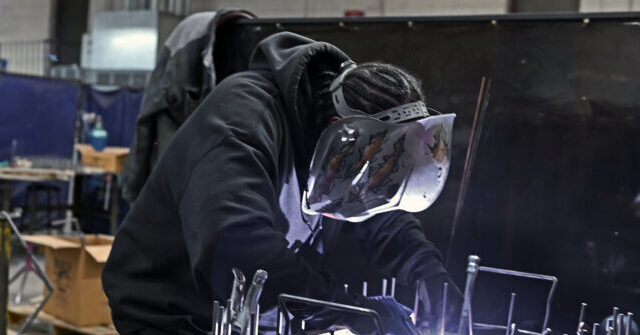U.S. manufacturing activity picked up sharply in August, according to a pair of surveys released Tuesday, offering mixed but cautiously encouraging signals for the industrial economy as new orders returned to growth and output surged.
The S&P Global U.S. Manufacturing PMI climbed to 53.0, its highest reading in over three years, up from 49.8 in July. The report pointed to a significant acceleration in production, robust hiring, and growing order books—conditions last seen during the post-pandemic manufacturing boom of 2022.
“Purchasing managers reported that U.S. manufacturing was running hot over the summer,” said Chris Williamson, chief business economist at S&P Global Market Intelligence. He noted that the rebound was partly fueled by companies stockpiling goods amid fears of further tariff increases and supply disruptions.
The survey also found that manufacturers raised output prices sharply in August as input costs jumped for a second straight month, with many manufacturers citing tariffs as the cause. While S&P warned this could feed into broader inflation, firms cited improved domestic demand and plans to expand production capacity in the months ahead.
A separate, long-running survey of U.S. manufacturers from the Institute of Supply Management showed a more subdued picture. Its Manufacturing PMI rose to 48.7, up modestly from July but still in contraction territory for the sixth consecutive month.
However, ISM’s New Orders Index broke into positive territory for the first time since February, rising to 51.4. That suggests underlying demand may be stabilizing, even as production and employment remained weak in the ISM survey.
“In August, U.S. manufacturing activity contracted at a slightly slower rate, with new orders growth the biggest factor in the 0.7-percentage point gain of the Manufacturing PMI,” said ISM’s Susan Spence. “However, since production contracted at a rate nearly equal to the expansion in new orders, the Manufacturing PMI® increase was nominal.”
Both reports cited tariffs as a key driver of price pressures, with manufacturers across sectors reporting higher input costs, disrupted supply chains, and delayed investment decisions. Several ISM respondents described layoffs and halted hiring plans, while others cited tentative domestic markets and weakening export demand.
Despite these headwinds, the S&P Global data suggest the sector may be regaining momentum, particularly among firms with exposure to U.S. consumers rather than international markets.
Read the full article here
